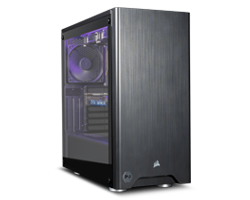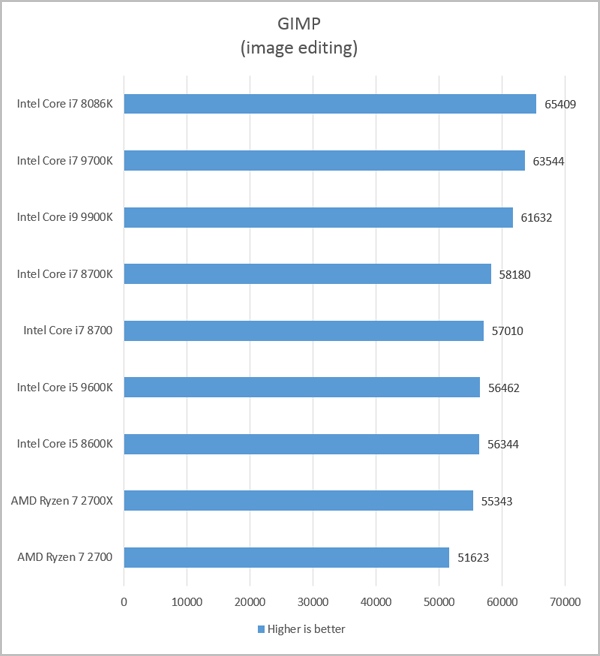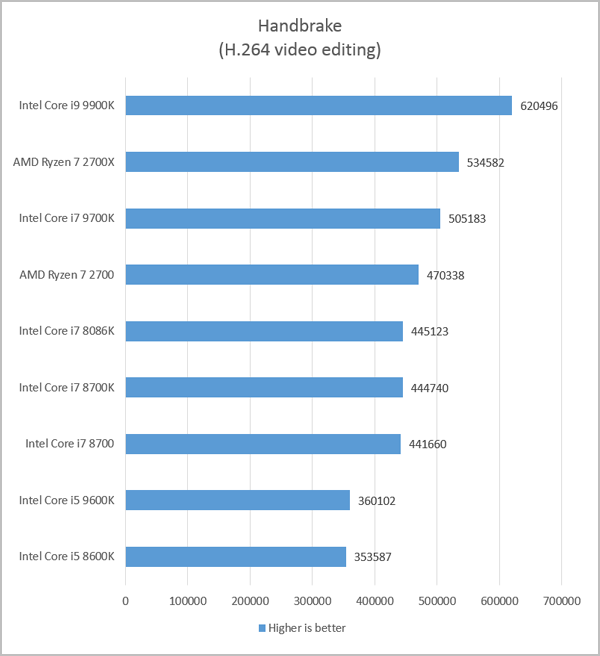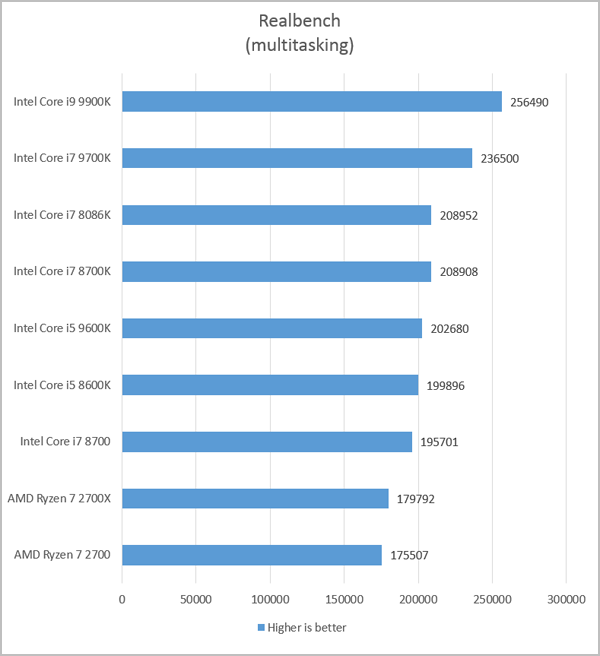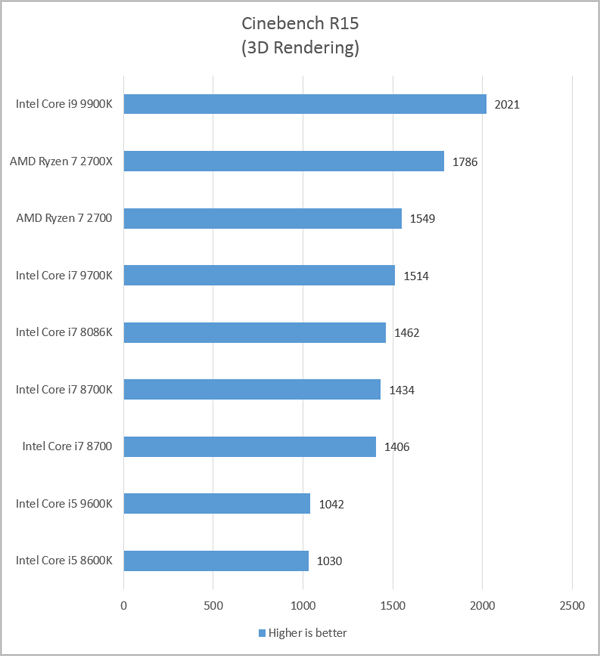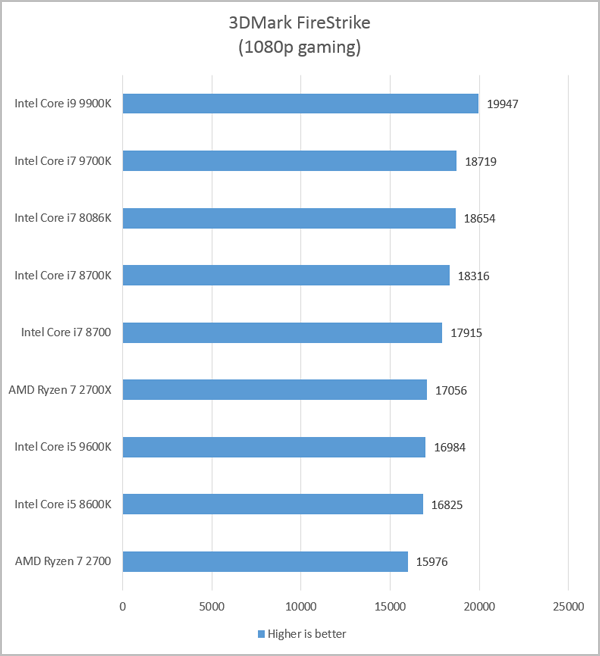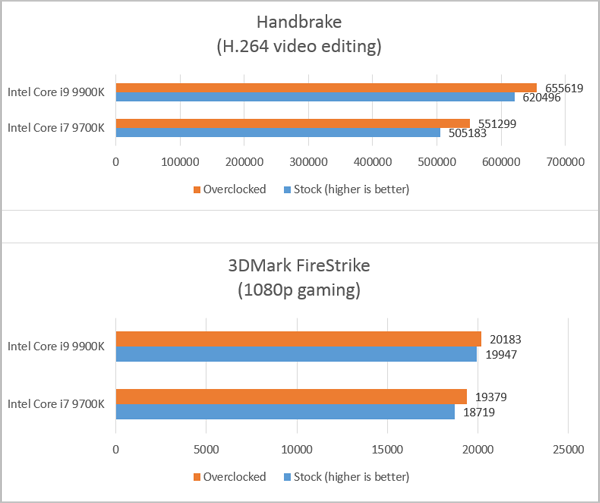SCANZONE
16.11.18 | ISSUE 60
The last few weeks has seen a flurry of new products launch onto the market, including new CPUs from Intel packed with up to 33% more cores, a new more affordable addition to the new NVIDIA GeForce RTX graphics card family, plus some tantalising details on AMD’s next-gen Zen 2 CPU architecture. Check out the full details in this month’s Scanzone.
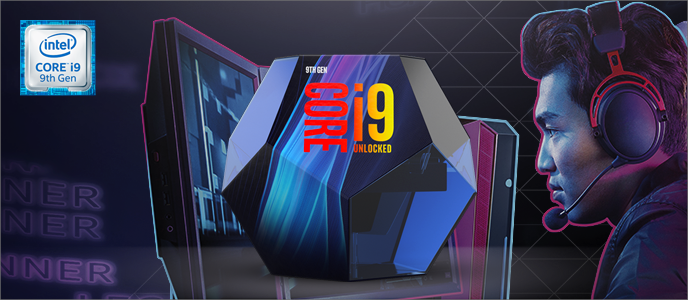
1. Intel 9th gen Core CPU review
The last couple of years have seen the return of some much-needed competition to the CPU market, with Intel and AMD vying for your business with increasingly desirable new processors.
The cadence at the moment seems to be a new Intel range every winter and a new AMD range in the spring, and so now it’s time for the new Intel 9th gen Core family.
This launch is quite unusual for Intel as the new 9th gen Core family uses the same Coffee Lake architecture as the 8th gen family and is built using the same 14nm manufacturing process. Instead, rather than focussing on improved efficiency, many of the new 9th gen models have more cores.
For instance, the 9th gen Core i7 9700K has an extra two cores over the 8th gen Core i7 8086K. However, it does lose Hyperthreading, so can only work on 8 threads at a time versus 12 on the 8086K. Even so, being an 8 core / 8 thread design is faster than the 6 core / 12 thread 8086K in heavily multithreaded applications.
There is also a 9th gen Core i9 9900K. This is really interesting, because it’s the first Core i9 on the Z platform, and its 8 core / 16 thread design gives you the best of both worlds, providing a highly potent mix of high thread count and high frequency.
However at the bottom of the range the new 9th gen Core i5 9600K has seen the least changes, as it shares the same 6 core / 6 thread design as the old 8th gen Core i5 8600K, with a mere 100MHz bump in base clock and 300MHz bump in turbo speed.
| Generation | 8th | 9th | 8th | 9th | 9th |
|---|---|---|---|---|---|
| CPU | Core i5 8600K | Core i5 9600K | Core i7 8086K | Core i7 9700K | Core i9 9900K |
| Architecture | Coffee Lake | Coffee Lake | Coffee Lake | Coffee Lake | Coffee Lake |
| Cores / Threads | 6 / 6 | 6 / 6 | 6 / 12 | 8 / 0 | 8 / 16 |
| Base Frequency | 3.6GHz | 3.7GHz | 4.0GHz | 3.6GHz | 3.6GHz |
| Turbo Frequency | 4.3GHz | 4.6GHz | 5.0GHz | 4.9GHz | 5.0GHz |
| Cache | 9MB | 9MB | 12MB | 12MB | 16MB |
| Memory Controller | Dual-channel DDR4 | Dual-channel DDR4 | Dual-channel DDR4 | Dual-channel DDR4 | Dual-channel DDR4 |
| PCI-E 3.0 Lanes | 16 | 16 | 16 | 16 | 16 |
| TDP | 95W | 95W | 95W | 95W | 95W |
| Typical price (inc VAT) | £309 | £349 | £489 | £499 | £599 |
The only other difference between the 8th and 9th gen Core processors is a return to using a solder based TIM between the chip itself and the heatspreader. As a result the new 9th gen CPUs run several degrees cooler than the 8th gen models, which should give more headroom for overclocking before the CPUs overheat.
In theory if you already own a motherboard based on the Z370 chipset you won’t need to upgrade that either, as the 9th gen CPUs share the same LGA1151 pin-out as their 8th gen predecessors. However, most Z370 motherboards will struggle to support the Core i9 9900K, especially if you plan on overclocking, more on this later.
However, there is a new motherboard chipset Z390 to consider. This adds support for USB 3.1c and an integrated WiFi MAC, although it’s still up to motherboard manufacturers to include WiFi, so you won’t find it included with all Z390 boards, especially the cheaper models.
Intel 9th gen Core Benchmarks
We put the three new 9th gen Intel Core CPUs through their paces, not only against the 8th gen Intel Core chips, but also AMD’s Ryzen processors. To make the comparison as fair as possible all the systems were tested in a very similar configuration, with the same CPU cooler, graphics card and RAM. The 9th gen Intel CPUs were tested in an Asus RoG STRIX Z390-F motherboard, the 8th gen CPUs in an Asus RoG STRIX Z370-F and the AMD CPUs in an Asus RoG STRIX B350-F.
The first performance test we ran on all the CPUs was the image editing program GIMP which is part of the Realbench benchmark suite. GIMP is only single-threaded so historically has run best on Intel CPUs due to their high IPC and frequency. It’s unsurprising therefore see the three Intel CPUs with the highest single-core Turbo frequency turning in the fastest results, with the limited edition Core i7 8086K taking pole position.
Next up was encoding an H.264 video using Handbrake. This application is heavily multithreaded, so it should come as no surprise that the CPU with the most cores and threads, the new Core i9 9900K, was the fastest with a significant 16% lead over the next fastest CPU, the Ryzen 7 2700X. This benchmark also shows the worth of 8 physical cores versus 6 physical cores plus HyperThreading, with the Core i7 9700K turning in a 13% faster score than the Core i7 8086K.
The multitasking test in Realbench runs several applications in parallel so is not only very processor intensive but also runs better on systems with fast memory. As expected, Intel’s Core i7 and Core i9 processors recorded the fastest scores in this benchmark, with a significant 23% difference between the Core i9 9900K and Core i7 8086K. Once again the 8 physical cores of the Core i7 9700K proved a strong point, with it achieving a 13% faster score than the Core i7 8086K.
The Cinebench benchmark is based on the popular modelling, animating and rendering application Cinema4D and measures how quickly a CPU can render a complex 3D scene. Until recently, the Ryzen 7 2700X was the fastest mainstream desktop CPU, but the Core i9 9900K is the new champion speeding past at an impressive 13% faster.
Intel’s Core i7 processors have been the king of the hill for gaming for many years, and thanks to its combo of high turbo frequency and large cache the new Core i9 9900K proved the fastest CPU in 3DMark. This is particularly pleasing to see as often CPUs with lots of cores such as the X platform Core i9s are often actually worse for gaming than CPUs with fewer cores. That said every CPU shown in this graph is awesome for gaming and would make a great partner for the latest generation of NVIDIA GeForce RTX 20-series graphics cards.
Overclocking
Although not based on a new architecture or manufacturing process we were hoping that the reintroduction of a solder-based TIM would result in cooler running CPUs and therefore bigger overclocks on the new 9th gen Intel Core processors. To some extent this is true, with the new CPUs running approximately 6C cooler under load than 8th gen CPUs, however, with different cores, cache sizes and frequencies it’s not an entirely fair comparison.
What is fair to say is that the new CPUs are good overclockers as we were able to overclock our sample Core i7 9700K and Core i9 9900K to 5.2GHz, a noticeable improvement over the previous best-overclocking Intel CPU, the Core i7 8086K, which typically maxed out at 5.0GHz. You can see how much of a performance benefit overclocking has in the graphs below.
You do need to be careful when overclocking Core i9 9900K though, as despite it having the same 95W TDP as the other CPUs, when overclocked it draws a huge amount of power and so puts a lot of strain on the motherboard VRMs. In our lab none of the sub £200 Z390 motherboards could handle an overclocked 9900K, as the VRMS overheated causing Windows to BSOD. The lowest spec Z390 board we would recommend is the Asus STRIX Z390-F Gaming, with higher end models running cooler still.
At least that means for the first time in several generations there’s a clear difference between budget, mid-range and high-end motherboards, so make sure to take care when choosing a partner for your Core i9 9900K.
Conclusion
The Intel 9th gen Core processor family has been one of the worst kept secrets for some time, but that doesn’t lessen the impact of Intel adding in two extra physical cores to the two top-most models.
We’re still not entirely convinced about the Core i9 branding of the flagship 9900K, especially as there is also a Core i9 9900X which has a completely different spec and uses the larger Socket 2066. Even so, it’s hard to not be impressed by the 9900K’s performance, whether in single or lightly threaded applications and games or heavily multithreaded applications such as rendering, it delivers unprecedented performance for a mainstream processor. It also appears to have great overclocking potential, just make sure you choose your motherboard carefully.
The other two new 9th gen CPUs, the Core i7 9700K and Core i5 9600K are less impressive, although with extra cores the 9700K is a welcome step up from the Core i7 8700K and the limited edition Core i7 8086K.
Scan Computers sells the complete range of Intel 9th gen Core processors and compatible Z390 motherboards, plus 3XS Systems featuring the new CPUs.
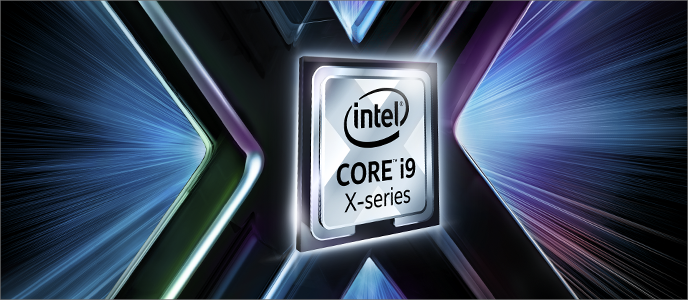
2. Intel 9th gen Core X series launch
Alongside the new range of upgraded Coffee Lake processors, Intel also launched a new range of 9th gen Core X series processors. The new models start with a 9, and while they don’t have any more cores than the 7th gen versions, they do run at higher clock speeds and have more cache memory.
Another welcome improvement is that all models now support 44 PCI-E lanes, whereas in the previous generation some CPUs only supported 28 PCI-E lanes. This is good news for workstation users as it means you’ll be able to connect more GPUs and high-speed cards such as RAID and network controllers before running out of bandwidth. Here’s a table with the specs of the new 9th gen Intel Core X CPUs.
| Generation | 9th | 9th | 9th | 9th | 9th | 9th | 9th |
|---|---|---|---|---|---|---|---|
| CPU | Core i7 9800X | Core i9 9820X | Core i9 9900X | Core i9 9920X | Core i9 9940X | Core i9 9960X | Core i9 9980XE |
| Architecture | Skylake X | Skylake X | Skylake X | Skylake X | Skylake X | Skylake X | Skylake X |
| Cores / Threads | 8 / 16 | 10 / 20 | 10 / 20 | 12 / 24 | 14 / 28 | 16 / 32 | 18 / 36 |
| Base Frequency | 3.8GHz | 3.3GHz | 3.5GHz | 3.5GHz | 3.3GHz | 3.1GHz | 3.0GHz |
| Turbo Frequency | 4.4GHz | 4.1GHz | 4.4GHz | 4.4GHz | 4.4GHz | 4.4GHz | 4.4GHz |
| Cache | 16.5MB | 16.5MB | 19.25MB | 19.25MB | 19.25MB | 22MB | 24.75MB |
| Memory Controller | Quad-channel DDR4 | Quad-channel DDR4 | Quad-channel DDR4 | Quad-channel DDR4 | Quad-channel DDR4 | Quad-channel DDR4 | Quad-channel DDR4 |
| PCI-E 3.0 Lanes | 44 | 44 | 44 | 44 | 44 | 44 | 44 |
| TDP | 165W | 165W | 165W | 165W | 165W | 165W | 165W |
| Typical price (inc VAT) | £682 | £999 | £1129 | £1353 | £1579 | £1918 | £2260 |
If you don’t fancy building your own 9th gen Intel Core X PC we also sell fully built WI6000-series workstations featuring the new processors from 3XS Systems.
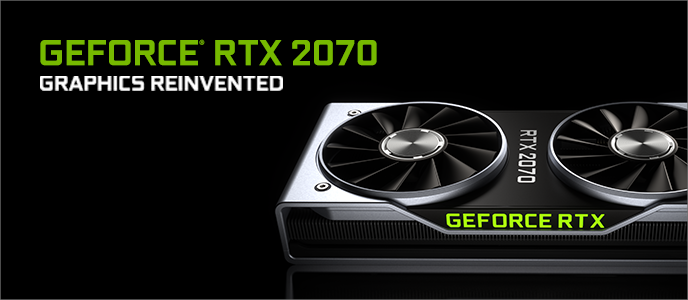
3. NVIDIA GeForce RTX 2070 review
The new GeForce RTX 2070 follows hot on the heels of the first two models, the RTX 2080 and 2080 Ti that NVIDIA launched a couple of months ago.
Like its bigger brothers, the RTX 2070 is based on the new Turing architecture, which introduces several exciting new features such as Deep Learning Super Sampling (DLSS) and hardware-accelerated ray tracing. For more info on these features and the Turing architecture please check out our original in-depth coverage of the RTX 2080 and 2080 Ti.
As you’d expect from its name the RTX 2070 sits below the RTX 2080 and 2080 Ti, although as you can see from the table below it still packs quite a punch.
| Model | RTX 2070 | RTX 2080 | RTX 2080 Ti | GTX 1080 | GTX 1080 Ti |
|---|---|---|---|---|---|
| Architecture | Turing | Turing | Turing | Pascal | Pascal |
| GPU | TU106 | TU104 | TU102 | GP104 | GP102 |
| CUDA Cores | 2,304 | 2,944 | 4,352 | 2,560 | 3,584 |
| Tensor Cores | 288 | 368 | 544 | 0 | 0 |
| RT Cores | 36 | 46 | 68 | 0 | 0 |
| Base Frequency | 1,410MHz | 1,515MHz | 1,350MHz | 1,607MHz | 1,480MHz |
| Boost Frequency | 1,710MHz | 1,710MHz | 1,545MHz | 1,733MHz | 1,582MHz |
| Memory | 8GB GDDR6 | 8GB GDDR6 | 11GB GDDR6 | 8GB GDDR5X | 11GB GDDR5X |
| Memory Controller | 256-bit | 256-bit | 352-bit | 256-bit | 352-bit |
| TDP | 175W | 225W | 260W | 180W | 250W |
| Typical price (inc VAT) | £529 | £799 | £1199 | £499 | £699 |
Benchmarks conducted by independent reviewers such as HEXUS indicate that the new RTX 2070 is not much faster than the old GTX 1080, although we would expect to see this gap widen once games that support DLSS start to make an appearance. As a result the new NVIDIA GeForce RTX 2070 is the most sensible gaming graphics card to consider buying if you have a 2560 x 1440 monitor.
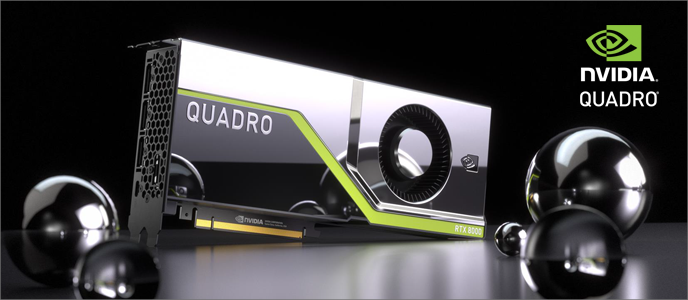
4. NVIDIA Quadro RTX updates
NVIDIA announced the new RTX based Quadros a few months ago, and now we’re able to list two of the models on our website for pre-order. The new RTX 5000 packs in 3072 CUDA cores, 384 Tensor cores, 48 RT cores plus 16GB of memory and retails for £2199 while the new RTX 6000 is equipped with 4608 CUDA cores, 576 Tensor cores, 72 RT cores plus 24GB of memory and retails for £5849. Don’t forget you can also pre-order the new RTX cards in our range of award-winning 3XS Pro Graphics workstations at a special supported price. At this time we haven’t had any cards in our lab yet so can’t share any performance results, but as soon as we are able to benchmark the new RTX Quadros we’ll post an update.
This week NVIDIA also announced the third new member of the Quadro series, the RTX 4000. This lower spec model is armed with 2304 CUDA cores, 288 Tensor cores, 36 RT cores plus 8GB of memory. We expect to get pricing on the new RTX 4000 in December.
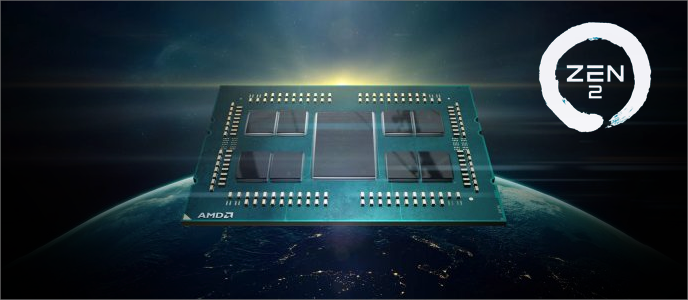
5. AMD unveils more details on upcoming Zen 2 CPUs
At the recent Next Horizon event AMD unveiled the first solid details of the upcoming Zen 2 architecture that will form the basis of its next-generation CPUs. Zen 2 will make its first appearance in Epyc server CPUs and will have three main improvements over current Zen+ CPUs; a new 7nm manufacturing process, more cores, core execution enhancements and improved security.
Within the core itself the branch predictor has been reworked and is aided by a smarter instruction pre-fetch, a re-optimised instruction cache plus an enlarged op cache. Zen 2 also doubles each core SIMD register from 128 to 256-bits, which should provide a massive performance boost in scientific and HPC applications, although the benefits for gamers and workstation users will probably be minimal. However, Intel’s Skylake SP processors will still have an edge in this regard, as they have native support for AVX 512.
Zen 2 CPUs will ship with up to 64 cores and 128 threads, double the current generation of Zen and Zen+ processors. They’ll also be constructed differently, with the CPU cores themselves being made from the new 7nm transistors, while the uncore components, such as I/O controllers and memory controllers, will be made using the existing 14nm process, helping to save the latest and greatest transistors for the more performance sensitive part of the CPU.
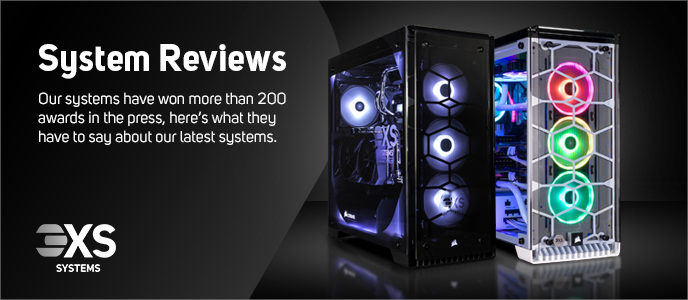
"Impressively fast and quiet at all times"
HEXUS was the first reviewer to take a look at the awesome combination of Intel Core i9 9900K CPU and NVIDIA GeForce RTX 2080 Ti graphics card. Built by 3XS Systems into the Vengeance RTX Ti gaming PC, the review found that ‘this is about as good as it gets for a current gaming PC’ and that ‘if you prefer to keep things sleek, there are some subtle details that elevate the 3XS Vengeance RTX Ti experience’. The review concludes that it’s ‘the ultimate destination for gamers with deep pockets’, giving the system a Performance award.
You can check out the awesomely fast 3XS Vengeance RTX Ti on our website.
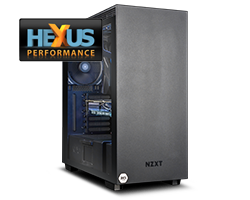
"A well-crafted PC that looks straight to the future"
Computer Shopper took a closer look at one of our gaming PCs based on the new Intel Core i7 9700K CPU and NVIDIA GeForce RTX 2080 graphics card. According to the review "the Gamer RTS scored, 267, one of the highest we’ve recorded from a pre-built gaming PC" and "this is the best priced system we can find".
You can check out the full review in the January issue of Computer Shopper and see the full specs online for the 3XS Gamer RTX on our website.
